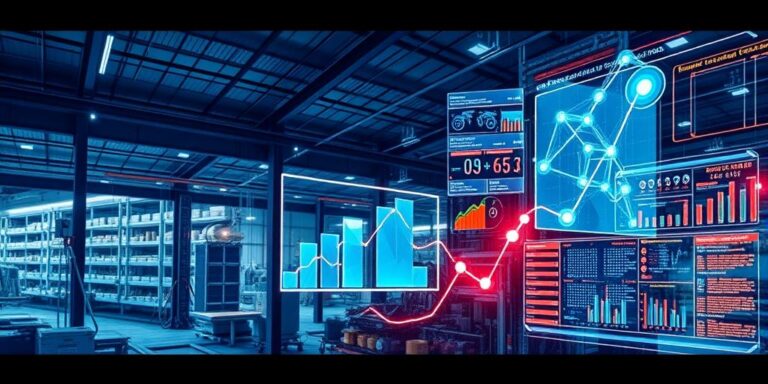Digital Twins in Manufacturing: A 2025 Standard?
Digital twin technology is rapidly transforming the manufacturing landscape. By creating virtual replicas of physical assets, processes, and systems, manufacturers can gain unprecedented insights, optimize operations, and drive innovation. This article explores the current state of digital twins in manufacturing and looks ahead to how they might become a standard practice by 2025.
What is a Digital Twin?
At its core, a digital twin is a virtual representation of a physical object or system. It’s more than just a 3D model; it’s a dynamic, evolving replica that mirrors the real-world entity in near real-time. Data from sensors, simulations, and other sources are fed into the digital twin, allowing it to reflect the current state of its physical counterpart.
Benefits of Digital Twins in Manufacturing
- Predictive Maintenance: By analyzing data from sensors on equipment, digital twins can predict when maintenance will be required, reducing downtime and costs.
- Process Optimization: Digital twins enable manufacturers to simulate different scenarios and optimize their processes for maximum efficiency.
- Product Development: Digital twins can be used to test new product designs and identify potential issues before physical prototypes are even built.
- Real-time Monitoring: With a digital twin, manufacturers can monitor the performance of their assets in real time, allowing them to quickly identify and address any problems.
- Training and Simulation: Digital twins provide a safe and cost-effective environment for training employees on new equipment or processes.
Current Adoption and Challenges
While the potential of digital twins is clear, adoption in manufacturing is still in its early stages. Some of the challenges include:
- Data Integration: Integrating data from different sources can be complex and time-consuming.
- Cost: Developing and implementing digital twins can be expensive, especially for smaller manufacturers.
- Skills Gap: There is a shortage of skilled professionals who can develop and manage digital twins.
- Security: Protecting sensitive data is crucial, and digital twins can create new security risks if not properly secured.
The Road to Standardization by 2025
For digital twins to become a standard in manufacturing by 2025, several key developments need to occur:
- Interoperability Standards: Establishing standards for data exchange and communication between different digital twin platforms will be essential.
- Reduced Costs: As the technology matures and becomes more widely adopted, the cost of developing and implementing digital twins should decrease.
- Education and Training: Investing in education and training programs to develop a skilled workforce is crucial.
- Enhanced Security: Implementing robust security measures to protect sensitive data is paramount.
- Cloud-Based Solutions: Cloud-based digital twin platforms can provide a cost-effective and scalable solution for manufacturers of all sizes.
Conclusion
Digital twins have the potential to revolutionize manufacturing, but for them to become a standard by 2025, significant progress needs to be made in terms of interoperability, cost reduction, education, security, and cloud-based solutions. By addressing these challenges, manufacturers can unlock the full potential of digital twins and drive innovation, efficiency, and competitiveness.




